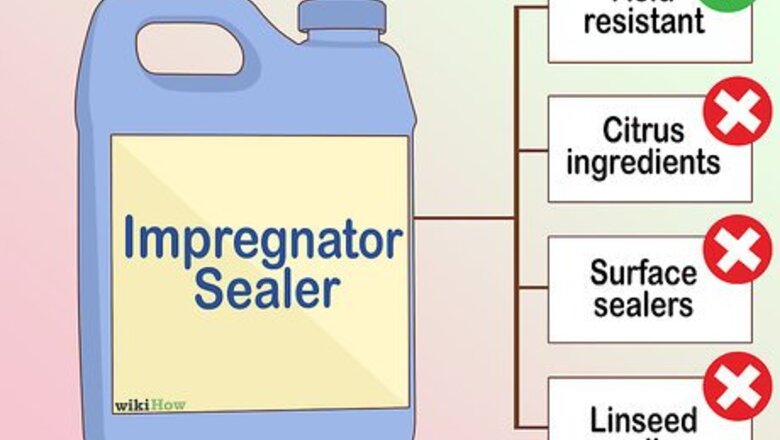
views
Choosing and Testing a Sealer
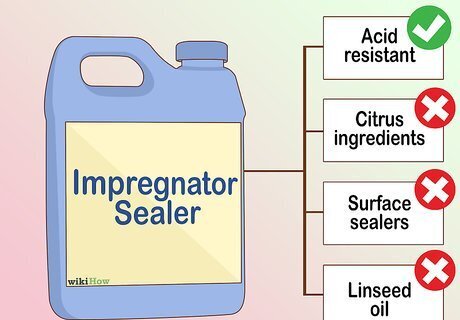
Buy an acid-resistant impregnator sealer. There are many different counter sealers out there to choose from. However, depending on the ingredients, some will be effective and others may cause damage. Read the label carefully and make sure to go with a sealer that is an acid-resistant impregnator. Stay away from the following: Citrus ingredients Surface sealers Linseed oil
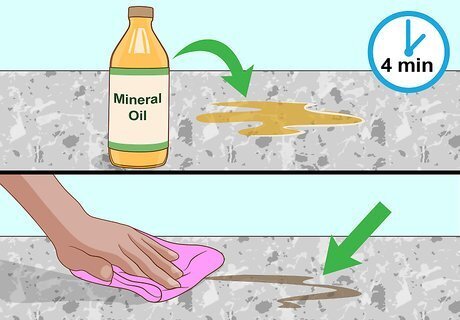
Test the marble with water or mineral oil. Sealing your countertop is probably the best way to protect it, but before sealing it, you should make sure it needs to be sealed. Put a few drops of mineral oil or water on your counter and leave it for a few minutes (4 minutes for the water and 10 for the mineral oil). Wipe up the liquid. If a dark spot or stain is left behind, then it’s time to seal your countertop. Don’t worry about the water or mineral oil leaving a spot behind; the liquid should evaporate within a half hour.

Clean the countertop with soap and water. Once you’ve determined that your countertop needs to be sealed, give it a good cleaning. Clean the countertop using a clean, soft cloth, a mild soap, and warm water. Afterwards, dry the area thoroughly with a clean, dry cloth. Don’t clean your countertop with any harsh or acidic chemicals or products, such as bleach or lemon juice.
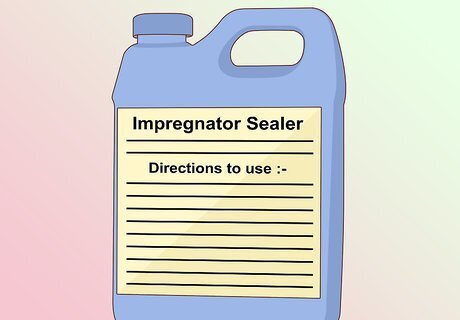
Read the instructions on the sealer’s label. Before applying the sealer, it’s important to read and understand the manufacturer’s directions on how to do so. Different manufacturers require using different application techniques and amounts of sealer, depending on the type of stone as well as the type of finish.
Applying the Sealer
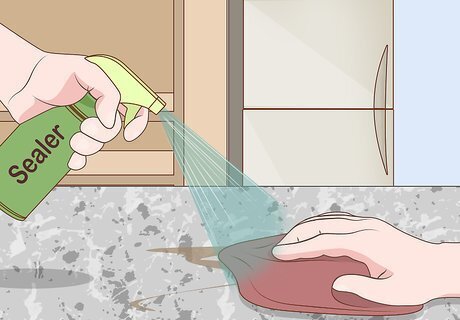
Apply the sealer by spraying and rubbing it in. Begin following the sealer’s directions. Typically, the sealer label will instruct you to spray the entirety of your countertop with the sealer and then rub it in with a clean, soft cloth. If you’ve never sealed you countertop before with the product you’re using, consider treating a small area and checking it 24 hours later to make sure it had a positive effect on your countertop. If your countertop has a large surface area, you may want to treat small sections one at a time.

Wait 5 minutes and remove any excess sealer. Unless otherwise instructed, let the sealer soak in for about 5 minutes and then get a clean microfiber cloth to use to wipe up any excess. If you happened to apply the perfect amount of sealer, then there may not be any left for you to remove. If this is the case, do a quick counter wipe with the microfiber cloth anyway.
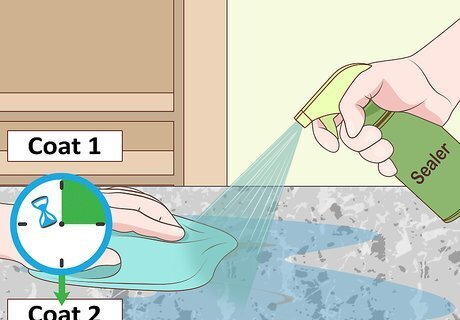
Apply a second coat after 15 minutes. It’s common and often beneficial to do more than one coat when applying sealer, mostly because multiple coats ensure full coverage. Make sure to wait at least 15 minutes so that the first coat can completely soak in, and then apply additional coats as needed and/or specified in your sealer’s directions.

Seal your countertop once a month. In order to provide the best possible protection for your countertop, you’ll need to repeat this process about once a month. Your marble countertop can stain easily and quickly, but with a strong sealer always on it, you’ll have a little more time to clean up any spills and prevent staining or etching.
Keeping the Countertop Clean
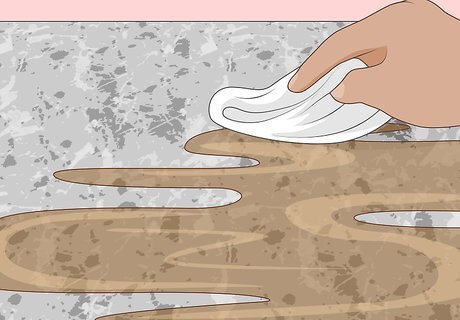
Wipe up spills immediately. If you want to keep your marble countertop in pristine condition, it’s vital that you wipe up any spills as soon as they happen. Marble is especially sensitive to acidic substances such as coffee, soda, fruit juices, and many common cleaning products. As soon as a liquid comes in contact with your counter, wipe it up with a paper towel, sponge, or soft cloth. Keep a hand towel nearby to ensure quick clean up.

Remove stains right away. If you wipe up a spill and it has already created a stain, remove the stain right then and there. Different kinds of stains require different removal techniques. Make sure you remove the stain quickly and properly. Remove an oil-based stain with a soft liquid cleanser, liquid detergent, ammonia, or mineral spirits. Remove an organic stain with a mixture of 12% hydrogen peroxide and a few drops of ammonia. Remove water stains with dry steel wool.
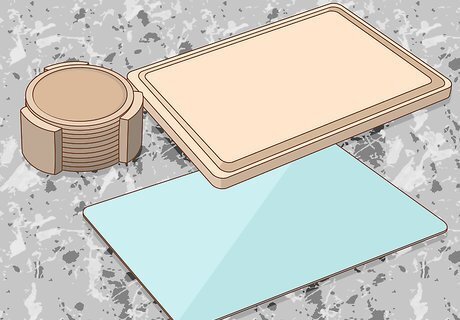
Use cutting boards, coasters, placemats, and trivets. All of these items create a barrier between your countertop and potentially damaging substances. This will prevent etches, scratches, and burn marks from permanently scarring your marble countertop.
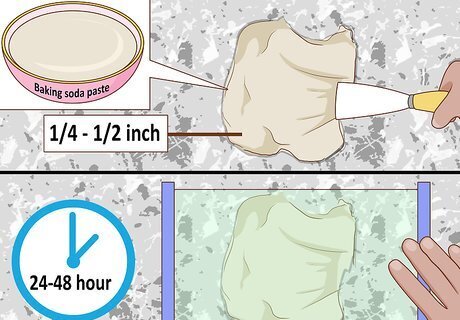
Apply a poultice to your countertop. If your marble countertop is looking especially dirty, dull, or stained, it might be best to apply a paste-like cleaning agent, such as baking soda, to your entire countertop. Mix the paste and slather it onto the counter evenly with a spatula so that it’s ¼ to ½ inch (0.64-1.27cm) thick. Cover it with plastic wrap and tape down the edges with painter’s tape. Remove the plastic after 24-48 hours, let the paste dry out, and then remove it with a wooden or plastic scraper.



















Comments
0 comment